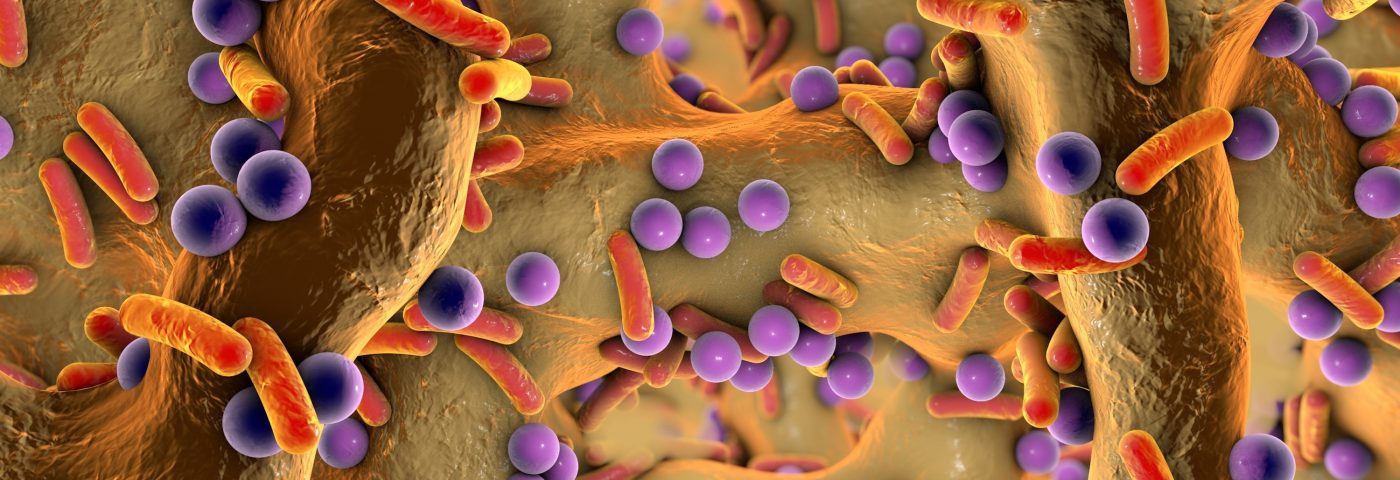Inhaled antibiotics appear to improve the quality of life of bronchiectasis patients, especially when they have a high bacterial load, a study suggests.
This means that bacterial load may be useful as a biomarker for disease severity and treatment response, according to the study, titled “Airway Bacterial Load and Inhaled Antibiotic Response in Bronchiectasis” and published in the American Journal of Respiratory and Critical Care Medicine.
Bronchiectasis is a respiratory disease where the airways become enlarged, damaged, and filled with mucus. Patients may have a productive cough, and mucus accumulation creates a bacteria-friendly environment that can result in recurrent respiratory infections.
Inhaled antibiotics are thought to help reduce the number of bacteria growing in the lungs, easing symptoms and reducing the frequency of exacerbations. However, clinical trials have failed to show a link between antibiotic inhalation and a better quality of life.
Based on this and previous evidence suggesting a direct association between the number of bacteria and airway inflammation, researchers at the University of Dundee in the U.K. and their colleagues hypothesized that patients carrying a higher number of bacteria have worse airway inflammation and lower quality of life, and would benefit more from antibiotic treatment.
Moreover, according to the researchers, differences in bacteria load could explain the inconsistent results seen in clinical trials.
To test their hypothesis, they first evaluated if, in patients with bronchiectasis, the bacterial load is in fact linked to quality of life and airway inflammation.
A total of 189 patients with stable disease were analyzed for bacterial load and inflammatory markers.
According to the number of colony forming units (CFU) found in sputum — a measure of the number of bacteria — patients were classified into three levels: low (fewer than 100,000 CFU/g), moderate (100,000 to 1,000,000 CFU/g), and high bacterial load (10,000,000 or more CFU/g).
A total of 86 patients (46%) had a higher bacterial load level and worse quality of life than those with low and moderate levels. These patients had more severe disease — an average score on the bronchiectasis severity index (BSI) of 9.3 points, compared with 7.7 and 5.2 for the moderate and low categories, respectively. They also had a tendency toward higher concentrations of inflammatory markers, including CXCL8 and TNF-alpha.
Next, the researchers looked for variations in bacteria load in patients who were receiving antibiotics for disease exacerbations.
Of 26 patients, 54% had a high initial bacterial load. After antibiotic treatment, the mean bacterial load decreased for the three groups. However, during follow-up, the bacterial load increased independently of the group.
In 10 patients with stable disease, 80% maintained steady bacterial load during this period.
Finally, the researchers analyzed if bacterial load could predict the response outcome in two randomized Phase 3 clinical trials testing inhaled aztreonam (brand name Azactam, among others) in bronchiectasis patients: the AIR-BX1 (NCT01313624) and the AIR-BX2 (NCT01314716) studies.
Of a total of 421 patients, 24% had a high bacterial load, 41% moderate, and 35% low levels at the start of the studies.
After 14 and 28 days of treatment with aztreonam, the bacterial load was reduced, but when treatment was stopped, the bacteria load returned to initial values. In the placebo group, the bacterial load levels remained stable.
When the team compared quality of life in the three categories, they observed that only patients with a high bacterial load had a clinical meaningful improvement compared with the placebo group.
Because the antibiotic treatment only had a significant effect on patients’ quality of life in the AIR-BX2 study, the researchers compared the percentage of high bacterial load participants in both studies. They found that the bacterial load in AIR-BX1 patients was much lower than in patients in the AIR-BX2 study.
Since it was mostly the high bacterial load patients who seemed to improve their quality of life with antibiotic treatment, the team believes this explains the diverse results of previous clinical trials.
“Improvement of quality of life with inhaled aztreonam was only evident in patients with high bacterial load. Bacterial load may be a useful biomarker of severity of disease and treatment response,” they concluded.

